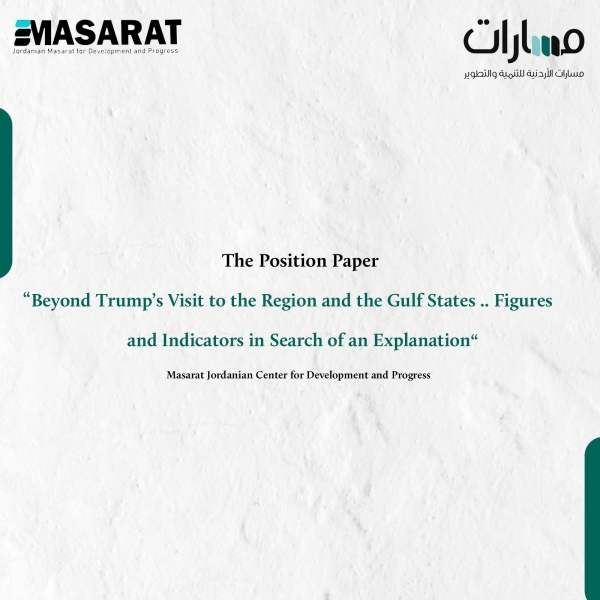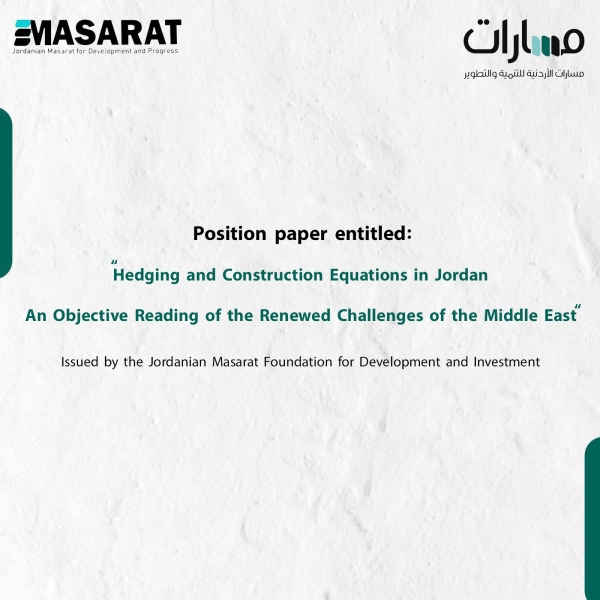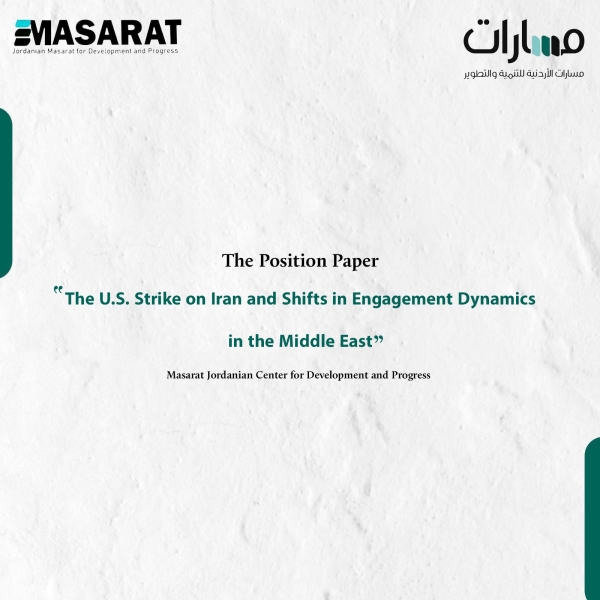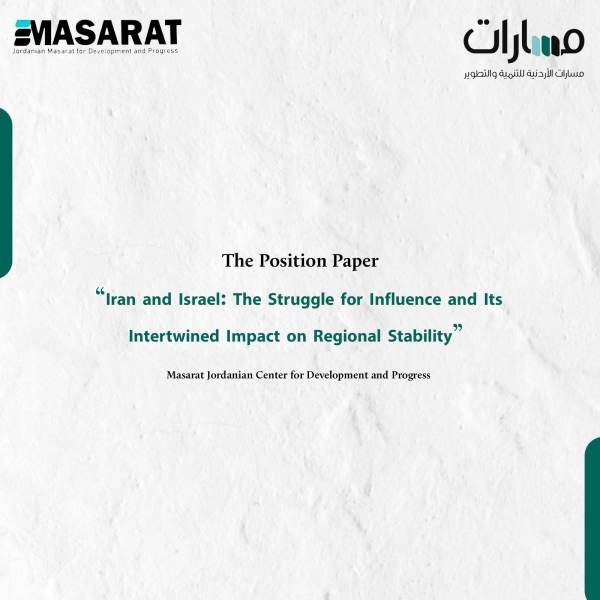What Lies Behind Trump’s Visit to the Region and the Gulf States – Numbers and Indicators

Introduction:
Masarat organized a high-level dialogue session that reviewed the geopolitical and economic implications of the visit of former U.S. President Donald Trump to some Gulf countries—particularly Saudi Arabia, the UAE, and Qatar—in the notable absence of a visit to Israel. This absence reshuffled discussions in political and research circles and opened the door to in-depth interpretations regarding the future of regional balances and the reshaping of traditional alliance systems in the region.
The session featured an elite group of researchers, intellectuals, and thought leaders. It began with a political reference to the symbolic and implicit dimensions of Trump’s visit—not merely a diplomatic tour but an attempt to introduce a new American vision that surpasses the legacy of “direct intervention.” It pointed toward charting intersecting relations and flexible influence through economic policies, reflecting a retreat from the traditional American role in managing conflict files.
Gulf as a Center for Soft and Hard Power:
According to participants, Trump’s choice of the Gulf as the first stop of his tour was not coincidental or purely protocol-driven. Rather, it carried strategic implications: the Gulf—especially Saudi Arabia—has become the new regional center of gravity and a cornerstone in formulating intersecting regional approaches in economics, innovation, and soft political power.
Saudi Arabia is increasingly playing the role of a “rentier state” mediator in global crises (e.g., between Russia and Ukraine) while asserting a firm stance on conditioning normalization with Israel on achieving a just and comprehensive solution to the Palestinian cause.
Economy as a Gateway to Influence:
On the economic front, the session described what some speakers called "investment diplomacy," now the backbone of new Gulf policies. Several agreements worth over a trillion dollars were signed across sectors like artificial intelligence, renewable energy, and defense, reflecting a calculated Gulf approach toward building an independent economic structure driven by technology, entrepreneurship, and away from sole reliance on oil revenues.
Some participants expressed reservations about what they termed “media exaggeration” that accompanied the visit. They pointed out that some announced figures might not reflect actual outcomes and were more about serving an electoral political agenda than representing concrete investment achievements.
Israel in the Background: Unspoken Tensions or a New Approach?
From an Israeli perspective, the notable exclusion of Israel from Trump’s visit raised deep discussions. Some considered this an attempt to avoid political embarrassment due to the policies of Netanyahu’s government—especially amid internal Israeli division over hostage crises, military options in Gaza, and deepening rifts between the White House and the Israeli right.
A hypothesis was posed that Trump’s rhetoric is now closer to the Israeli opposition, prioritizing the hostage issue—unlike Netanyahu, who exploits war to maintain internal political calculations. This signals a divergence that, while not a rupture, indicates cracks in U.S.-Israel unity.
Toward a New Middle East: Redefining the Scene, Not Just Moving Pieces
What is happening now in the region represents a turning point in a long-term trajectory of recalibrating power balances. Fundamental shifts are redefining the nature of alliances, the role of non-traditional actors, and the positioning of Arab states in regional and global conflict equations.
Trump’s visit to the Gulf was a significant turning point in engineering regional alliances and redrawing traditional lines of influence. While appearing as an economic endeavor via soft tools, it carried highly important political and security messages.
The exclusion of Israel, and the inclusion of Saudi Arabia, the UAE, and Qatar, marked an unusual shift in American priorities and opened wide the door for interpretations linked to the fundamental transformation of alliances currently shaping the Middle East.
1. Geopolitical Dimension:
U.S. movements suggest a tilt toward repositioning in the region—empowering regional allies, particularly major Gulf countries, to play more advanced roles as international actors shaping regional security equations. This comes amid the decline of traditional powers and the rise of non-Arab regional actors like Iran, Turkey, and Israel.
Saudi Arabia is no longer a mere follower of U.S. influence but an active partner shaping both regional and international policy—mediating between Russia and Ukraine and opposing unconditional normalization with Israel unless the two-state solution is revived. This highlights a clear power shift and growing Gulf negotiating leverage, positioning the Gulf as the new Arab decision-making center.
2. Economic Dimension:
The economic aspect of Trump’s visit—arguably its most strategic component—focused on trillion-dollar investments, reflecting Trump’s identity as a “deal-maker” more than a traditional policymaker.
His approach emphasized expanding the concept of “flexible alliances,” based on mutual interests and distanced from ideological or military commitments. This helps explain the absence of Israel from his visit’s priorities—despite its traditional weight in the American strategic equation—and suggests an effort to compensate for Israel’s image erosion by leaning on Gulf economic power.
3. Syria and Normalization Indicators:
Trump’s meeting with Syrian President Ahmad Al-Sharaa—among the most controversial aspects of the visit—suggested a possible rapprochement between Damascus and Tel Aviv. If accurate, this scenario would include clear and conditional concessions from the Syrian side in exchange for lifting international and European sanctions and reintegrating Syria into the regional and global system. It would activate the “conditional return” approach in exchange for “phased peace.”
4. Jordan’s Position in a Changing Landscape:
Questions were raised about Jordan’s diminishing role amid the Gulf’s rise. However, King Abdullah II’s return from Washington before Trump’s visit, and the announcement of continued U.S. aid, reflect sustained U.S. appreciation for Jordan’s role. The formation of Jordan’s Supreme Council for National Security was cited as further evidence of Jordan’s renewed relevance in areas like water, energy, and agriculture—key to any long-term stability project in the Levant.
5. Humanitarian and Security Dimensions:
In humanitarian terms, the ongoing war in Gaza has become a moral and strategic dilemma for Israel. Despite UN reports highlighting the humanitarian catastrophe in Gaza, Netanyahu’s government continues to reject political solutions, favoring unilateral military approaches—deepening Israel’s moral and diplomatic isolation from Western allies.
Toward a Middle East with New Weights:
Trump’s visit was merely the tip of the iceberg amid deeper regional transformations aiming to produce a new multipolar regional order. This includes distributing roles, sidelining Israeli exclusivity, and enabling new powers like Saudi Arabia, Qatar, and even Jordan to assert themselves.
These changes signal a structural shift in relations between traditional and new actors—including economic powers like the U.S. and non-Arab states like Israel—returning Arab geopolitical centrality to the spotlight.
Saudi Arabia: From the Heart of Arabism to the Center of Geopolitical Gravity
In a stark shift from Obama’s 2009 speech in Cairo, Saudi Arabia has replaced Egypt as the hub of Arab political leadership. Riyadh is now the epicenter of regional initiatives, a platform for negotiation, and a site where global powers must negotiate balances—evidenced by its demands on uranium enrichment and dual summits with China.
Syria: Gradual Return to the Regional Stage
Trump’s unexpected meeting with President Al-Sharaa suggested a phased path for reintegrating Syria after years of isolation and sanctions. This move, aligned with Europe’s easing of economic sanctions, increases the possibility of reconstruction, investment, and softening of previous hardline stances.
Yemen and the Houthis: Marginal Actors Rising to Central Influence
While linked to the Gaza war, the Houthis’ deep strikes in Israel mark their rise from the margins to center stage. Their influence could reshape regional stability and future negotiations.
Israel: From Strategic Partner to Strategic Liability
The most dangerous shift may be the growing change in international sentiment toward Israel—from an unshakeable strategic ally to a subject of global scrutiny, especially after the Gaza war dismantled the “eternal victim” narrative. Israel is now facing genuine accountability in global public opinion, which is unprecedented in recent decades.
Conclusion: A Redefined Regional Landscape
A new Middle East is being shaped—where roles are redefined, sovereignty is recalibrated, and the economy remains the cornerstone. Trump’s visit illustrated a convergence between his “business diplomacy” approach and Gulf countries’ desire to invest their financial surplus into long-term projects in the post-oil era.
It is enough to compare the $297 billion trade volume between the Gulf and China with $93 billion with the U.S. to see how clearly the Gulf’s compass is turning toward Asia.
Issued by Masarat – Jordanian Foundation for Development and Progress
Date: 31/05/2025






